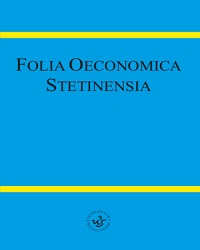Assessment of the Development of the European OECD Countries with the Application of Linear Ordering and Ensemble Clustering of Symbolic Data
Assessment of the Development of the European OECD Countries with the Application of Linear Ordering and Ensemble Clustering of Symbolic Data
Author(s): Marcin PełkaSubject(s): Supranational / Global Economy, Methodology and research technology, Economic development
Published by: Wydawnictwo Naukowe Uniwersytetu Szczecińskiego
Keywords: country development; symbolic data analysis; OECD countries; ensemble clustering;
Summary/Abstract: The research background of the paper covers the development of a country, that can be measured in various ways. Simple indicators, like GDP and also complex indicators such as HDI (human development index), can be used to measure country development. However, usually countries are divided into groups via setting some arbitrary levels of final measure. What is more, the composite (complex) indices have some problems and errors. The main purpose of the paper is the assessment of the development of the selected European OECD countries with the application of the linear ordering and ensemble clustering of symbolic data as well as comparison of the ensemble clustering with a single model. Research methodology covers linear ordering with the application of multidimensional scaling for a visualisation of results and ensemble clustering for symbolic data. The results are compared according to adjusted Rand and silhouette indices. The obtained results show that ensemble clustering for symbolic data can be a useful tool in country development analysis and allows reaching better results than a single model. The novelty of the proposed approach is to use a cluster analysis to obtain the clusters of countries with similar variables’ values (indicators of development) and the application of multidimensional scaling for symbolic data in order to visualise linear ordering results.
Journal: Folia Oeconomica Stetinensia
- Issue Year: 19/2019
- Issue No: 2
- Page Range: 117-133
- Page Count: 17
- Language: English

